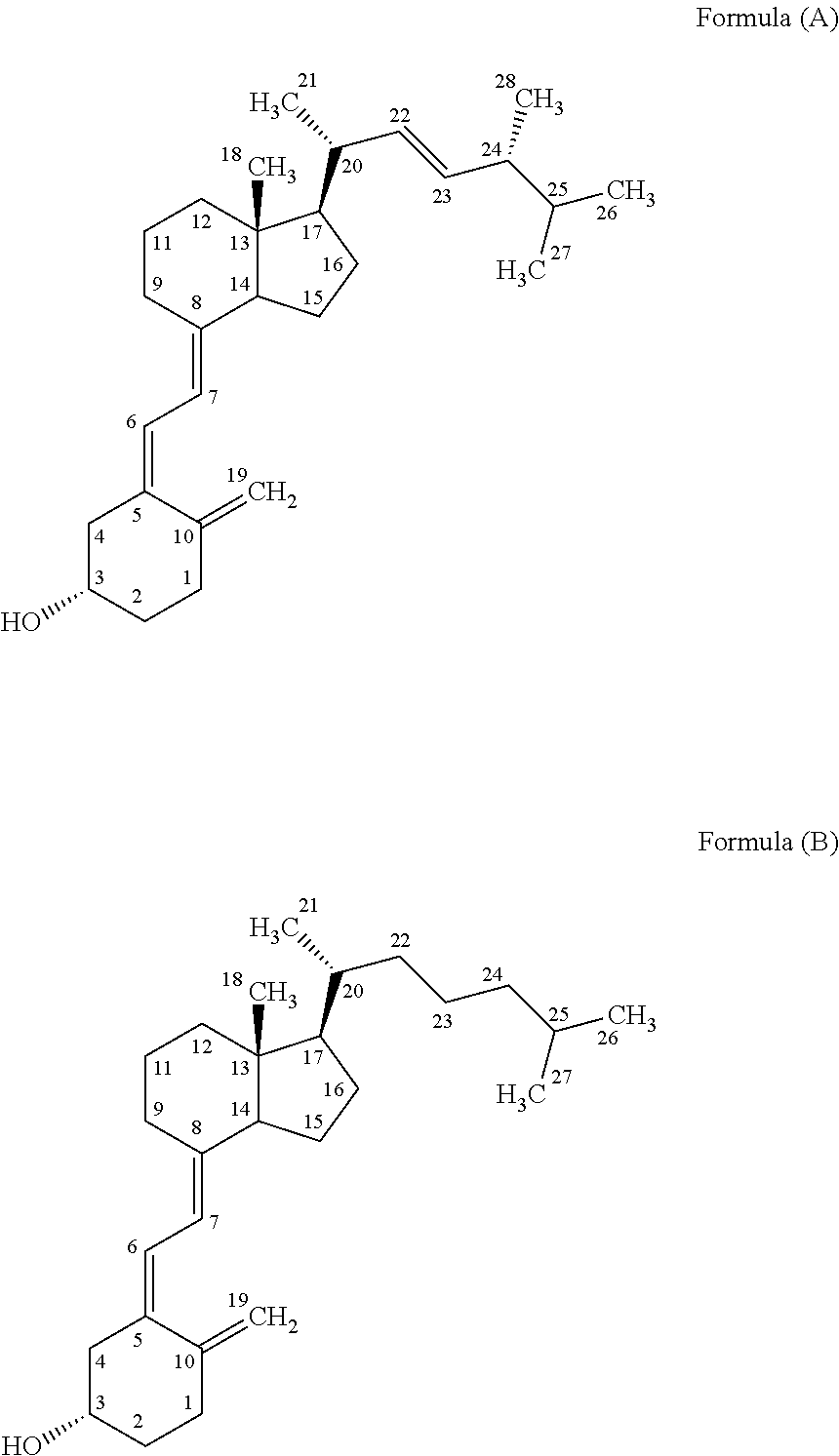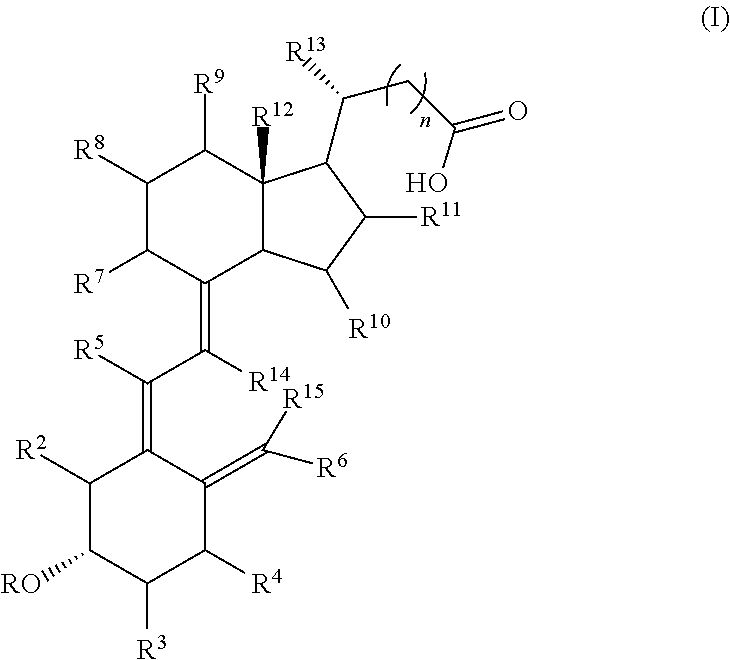Process for the production of a hybridoma and antibody obtained therefrom, able to recognize more than one vitamin d metabolite
a technology which is applied in the field of hybridoma and monoclonal antibody production, can solve the problems of unspecified measurement, end of the desired production, and low vitamin d content measurement, and achieves the effect of simple procedure and easy reproducibility
- Summary
- Abstract
- Description
- Claims
- Application Information
AI Technical Summary
Benefits of technology
Problems solved by technology
Method used
Image
Examples
Embodiment Construction
[0097]The present invention shall be described according to a specific form of execution in which the hapten, used for the immunisation of the animal, is a derivative of formula (I) in which n is an integer equal to 0; R, R2, R3, R4, R5, R6, R7, R8, R9, R10, R11, R14, R15 are hydrogen; R12 and R13 are a methyl group. This hapten shall be referred to as (H) for the remaining description. It is important to understand that the invention is not limited to this embodiment. For example, the hapten may be a derivative of formula (I) in which n is equal to 1, 2 or 3 with substituents unchanged.
Procedure for the Production of a Monoclonal Antibody
[0098]The production of a monoclonal antibody may be effected following the conventional procedure such as described, for example, in Kohler and Milstein, Nature 1975 (256), 495-497 or Eur. J. Immunol. 1976 (6), 511-519. According to this method, myeloid cells are combined with lymphocytic B cells of an immunised animal to obtain hybrid cells, know...
PUM
| Property | Measurement | Unit |
|---|---|---|
| temperature | aaaaa | aaaaa |
| pH | aaaaa | aaaaa |
| volume | aaaaa | aaaaa |
Abstract
Description
Claims
Application Information
 Login to View More
Login to View More - R&D
- Intellectual Property
- Life Sciences
- Materials
- Tech Scout
- Unparalleled Data Quality
- Higher Quality Content
- 60% Fewer Hallucinations
Browse by: Latest US Patents, China's latest patents, Technical Efficacy Thesaurus, Application Domain, Technology Topic, Popular Technical Reports.
© 2025 PatSnap. All rights reserved.Legal|Privacy policy|Modern Slavery Act Transparency Statement|Sitemap|About US| Contact US: help@patsnap.com



